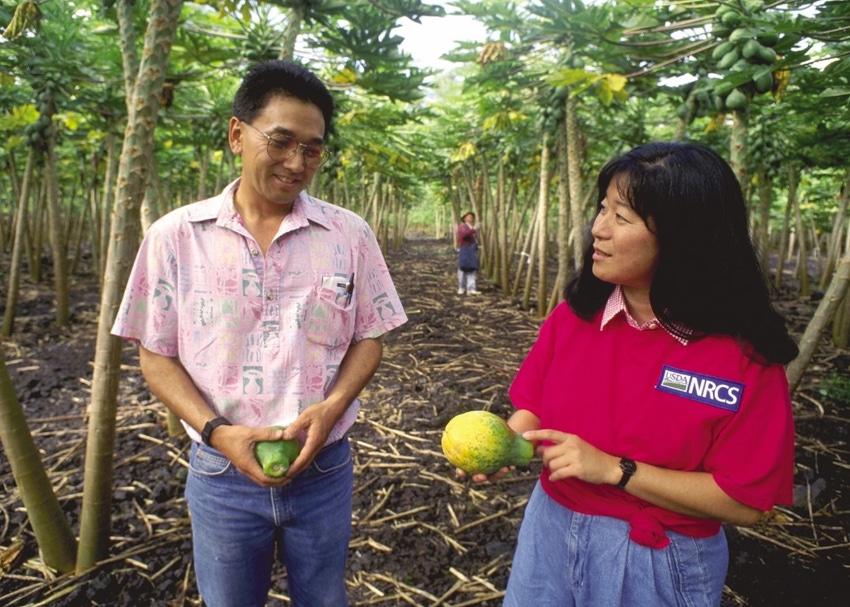
An update from the Western Plant Health Association on anti-pesticide and anti-genetically modified organism (GMO) movements underway in Hawaii.WPHA continues to share information to help raise awareness concerning the truth about the safety and importance of crop production products.
April 10, 2015

I promised several months ago in this space to update you about the anti-pesticide and anti-genetically modified organism (GMO) movements underway in Hawaii.
The latest news is that the islands continue to be a hotbed of activity against agriculture’s methods and tools.
National anti-pesticide and anti-biotechnology groups have teamed up with local activists with the goal of crippling and driving the seed research farms out of Hawaii. The thrust of their energies has been focused on the seed farms’ use of pesticides and the alleged impact this will have on the surrounding communities.
Hawaii Legislature
This activist unrest first began at the county level and has now made its way to the Hawaiian Legislature. More than 15 anti-pesticide bills have been introduced this season that would put unprecedented restrictions on larger agriculture entities and their use of pesticides.
All of the proposed legislation has died for this year, but there is the likely expectation that the bills, and many others similar to them, will be back in even greater number in the next session.
WPHA on the offensive
To counter this activist assault, the Western Plant Health Association (WPHA) which represents agricultural interests in California, Arizona, and Hawaii - along with other allied agricultural groups - went on the offensive to dispel misinformation and defend agriculture.
WPHA implemented a program that better informs policy makers, farmers, and local community members about the safe use and management of crop protection tools.
WPHA is working with the Hawaii Crop Improvement Association (HCIA) to hold ongoing events in Hawaii about how crop protection products are managed and regulated to protect the environment and public safety.
The events – spearheaded by WPHA’s President Renee Pinel and Director of Environmental and Regulatory Affairs Rachel Kubiak - have been held on Oahu, Maui, and Kauai.
Informing the public
WPHA developed outreach materials to pass out to the public during these meetings held during days and evenings to maximize the number of people who could attend. Crowds of curious and inquisitive farmers and community members packed the rooms.
The program provides valuable, truthful information for farm groups, HCIA-WPHA company personnel, allied business groups including the local Chamber of Commerce, and policy makers including legislators and regulatory agency managers.
This is all part of a continuing series of events designed to help raise awareness concerning the truth about the safety and importance of crop production products.
Farmer decision making
One of the main objectives entails educating groups or individuals who support the right of farmers to make their own decisions on how to manage their farms and to be familiar enough about crop protection products to feel comfortable addressing the topic.
Hopefully, this will encourage them to engage in conversations about these issues, and begin challenging the anti-pesticide and anti-GMO hyperbole that has dominated much of the conversation over the past year in Hawaii.
It’s interesting to note the particulars in what is discussed in the massive community outreach project.
The topics covered include: what is required to register a product; the science behind the registration process; what experimental use pesticides are and how they are regulated; what a Restricted use pesticide is; when, why, and how pesticides are mixed; what is drift; and what are the regulations in place to prevent it.
WPHA also covers the facts behind the most common misrepresentations tossed about on the islands about crop protection tools, and how to respond to those misrepresentations.
Farmers speak
HCIA provides farmer speakers to give firsthand examples of why they need pesticides and what can happen if not used.
Since pesticides and GMOs have been a hot topic of controversy over the past few years in Hawaii, it’s needless to say the issue has sparked the interest of news reporters.
When asked by one curious reporter in Hawaii about the subject, WPHA President Pinel said activists have been pushing for full disclosure of pesticide usage for seed farms in Hawaii, based on California’s Pesticide Use Reporting (PUR) system, as well as extended buffers around farms that use pesticides.
Pinel explained the costs of the California PUR program, and the potential costs of mimicking the program in Hawaii to farmers.
Elimination of crop protection tools?
She emphasized that despite the hyperbole of activists that the concerns were limited to seed farms, she said the ultimate goal of these activists was the total elimination of the availability of crop protection tools to farmers.
“If activist groups are successful in requiring unnecessary reporting of crop protection products for seed farms, their agenda will move to require it of all farmers – a step that the Hawaii Farm Bureau believes will result in many small farmers being driven out of business,” Pinel told media.
She noted the importance of having crop protection tools available to farmers, and the commitment of WPHA member companies and allied farm trade groups for the overall benefits of agriculture.
This means working together with the State of Hawaii to develop a program that will address the sincere concerns of communities without resulting in excessive costs to farms.
Historical lesson
Last, when it comes to the suspicions in Hawaii regarding the benefits and safety of GMOs, its enlightening to mention this point.
In the late 1980’s, the University of Hawaii began developing a papaya strain resistant to the papaya ringspot virus that was decimating the islands’ papaya crops. Hawaiian farmers began commercially growing the first virus-resistant papayas in 1999.
Bioengineered papayas now cover roughly 2,400 acres - three quarters of the total Hawaiian papaya crop.
These papayas have been approved for consumption in the U.S. and Canada. Several Asian countries are developing GMO papaya varieties resistant to local virus strains.
It’s a pity - how soon they forget.
You May Also Like



